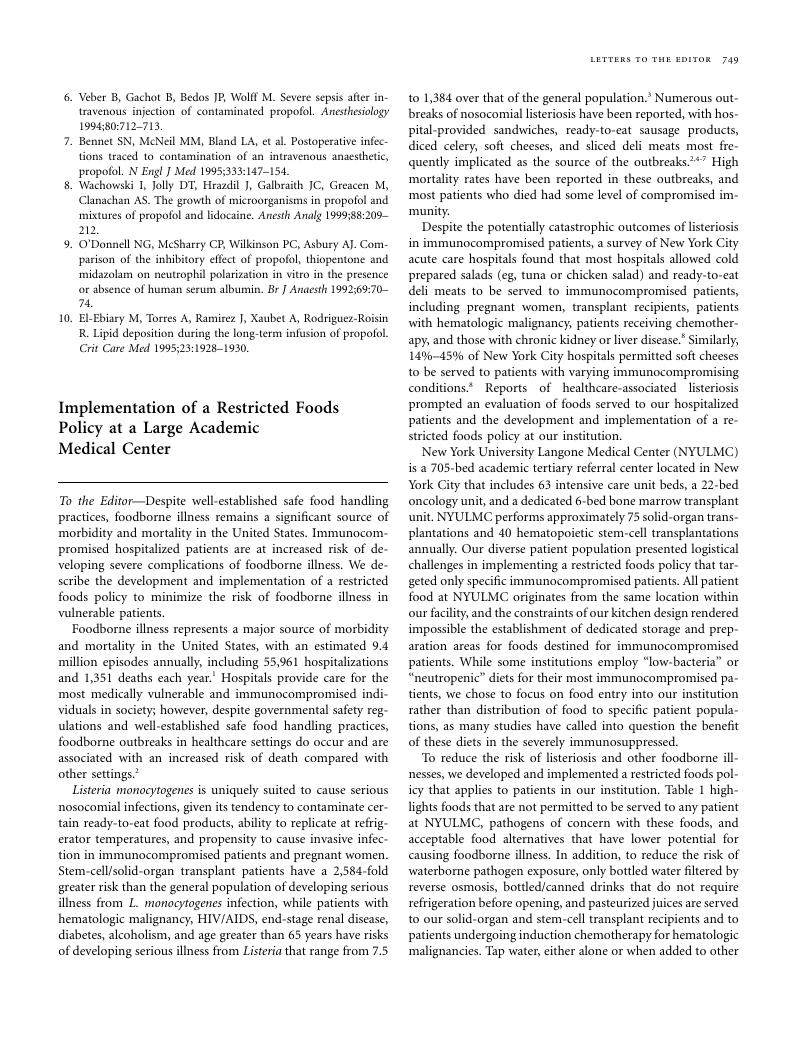Crossref Citations
This article has been cited by the following publications. This list is generated based on data provided by Crossref.
Silk, B. J.
McCoy, M. H.
Iwamoto, M.
and
Griffin, P. M.
2014.
Foodborne Listeriosis Acquired in Hospitals.
Clinical Infectious Diseases,
Vol. 59,
Issue. 4,
p.
532.
Cutro, S.
Phillips, M.
and
Horowitz, H. W.
2019.
Principles and Practice of Transplant Infectious Diseases.
p.
1069.
Lund, Barbara M.
2019.
Provision of microbiologically safe food for vulnerable people in hospitals, care homes and in the community.
Food Control,
Vol. 96,
Issue. ,
p.
535.
Conrad, Amanda R
Tubach, Sheri
Cantu, Venessa
Webb, Lindsey Martin
Stroika, Steven
Moris, Steve
Davis, Megan
Hunt, D Charles
Bradley, Kristy K
Kucerova, Zuzana
Strain, Errol
Doyle, Matthew
Fields, Angela
Neil, Karen P
Gould, L Hannah
Jackson, Kelly A
Wise, Matthew E
Griffin, Patricia M
and
Jackson, Brendan R
2023.
Listeria monocytogenes Illness and Deaths Associated With Ongoing Contamination of a Multiregional Brand of Ice Cream Products, United States, 2010–2015.
Clinical Infectious Diseases,
Vol. 76,
Issue. 1,
p.
89.





